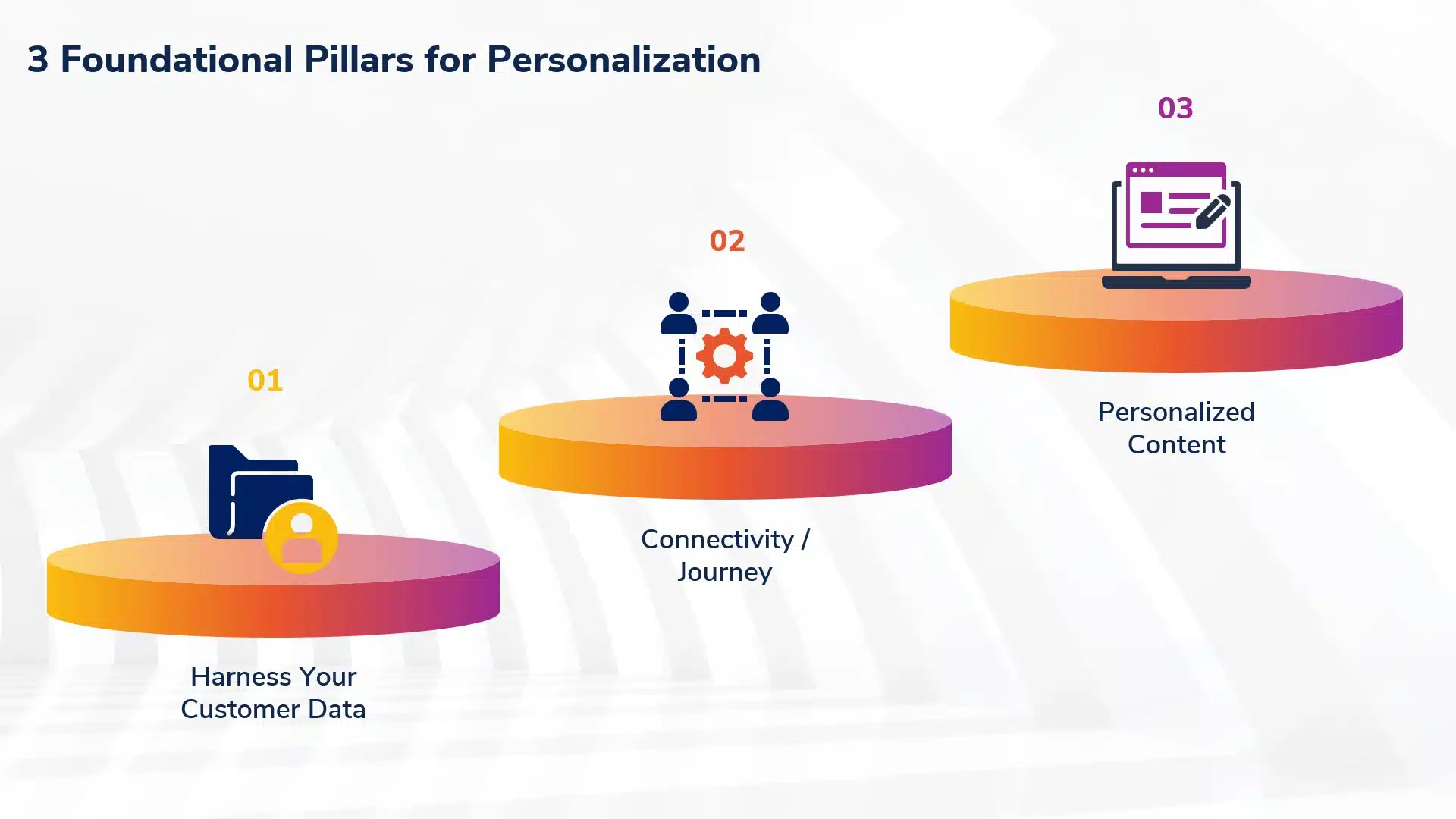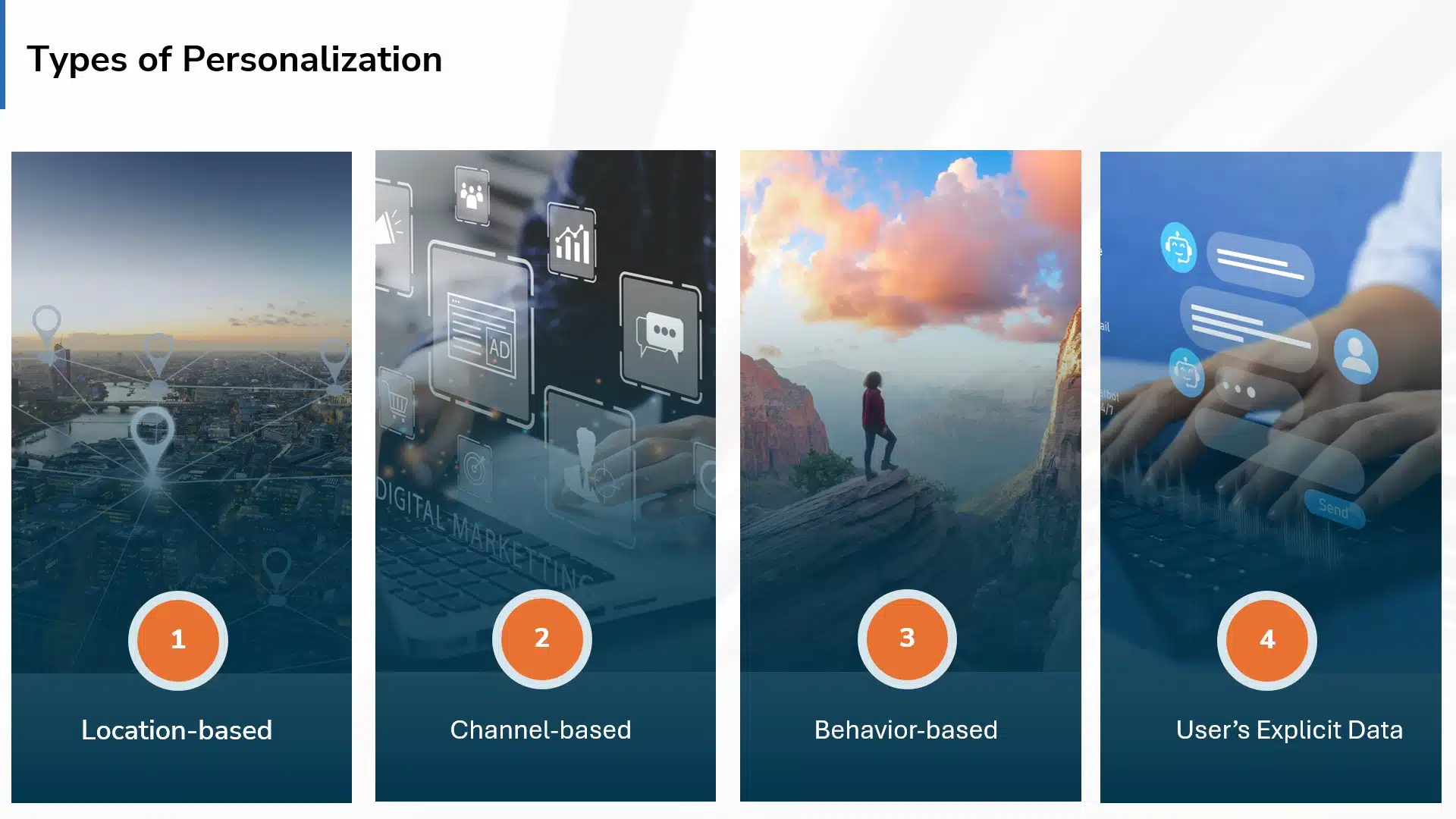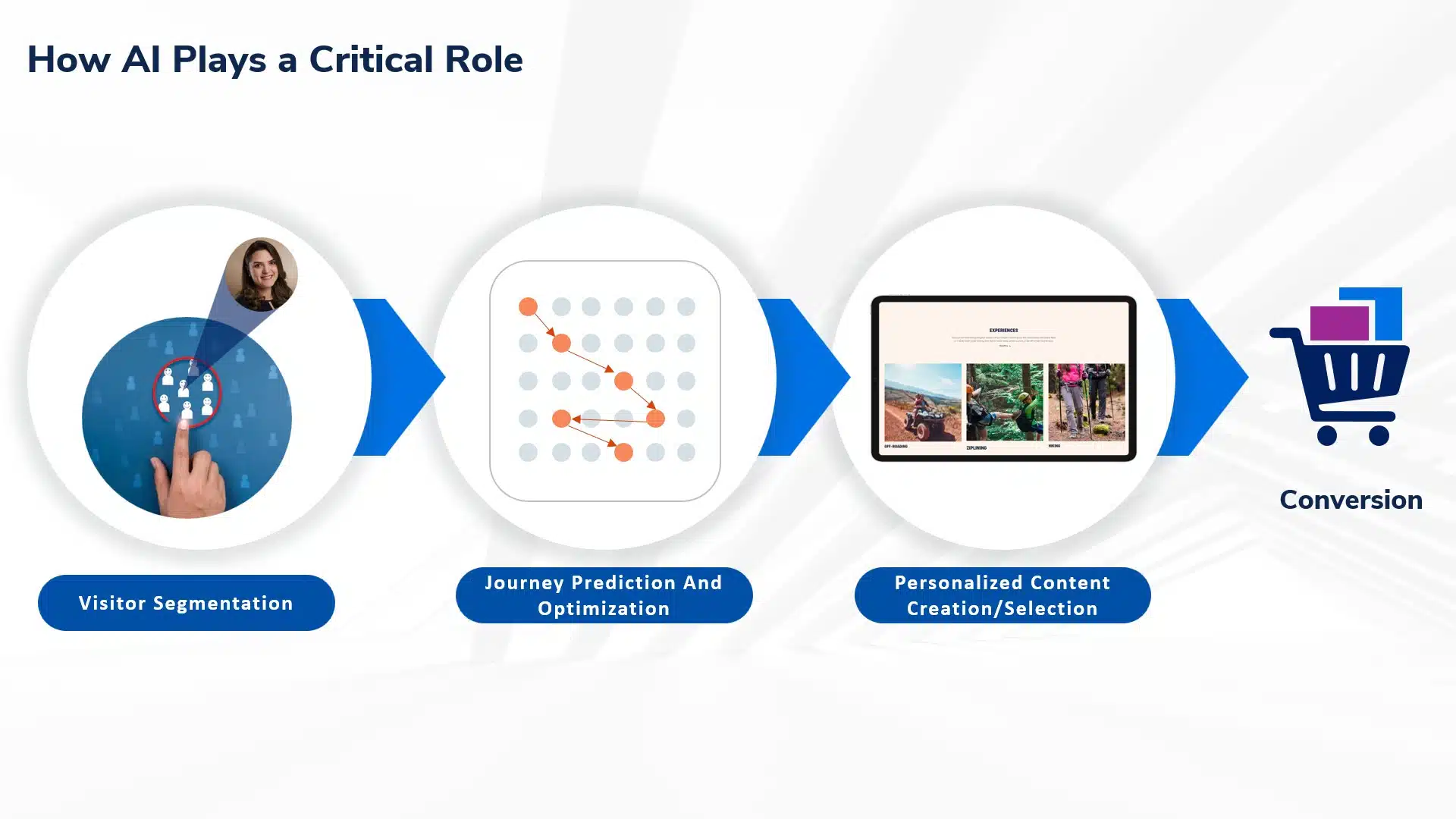Personalization is rapidly becoming essential for businesses to drive engagement, loyalty and revenue growth.
With declining website traffic from search and the phase-out of third-party cookies, companies must find new ways to maximize every visitor interaction.
Consumers now expect personalized, tailored experiences across all touchpoints, just as they receive on social media.
This article explores the foundational pillars of effective personalization, the role of AI in identifying segments and predicting journeys and real-world examples of how brands have boosted conversions through location-based, channel-based, behavioral and customer data-driven personalization tactics.
Why personalization is vital for marketing strategies
Two primary contributing factors are making personalization a vital component of the marketing strategy for businesses:
- As click-through rates from organic search drop – especially from top-of-the-funnel information-seeking queries – website traffic likewise declines. You need to engage every visitor because website visitors are even more important now than before.
- The pending deprecation of third-party cookies has significantly challenged marketers to offer personalized experiences. Marketers should focus on first-party data collection and activation and onboarding a CDP to remove data silos and create a single unified view of the customer.
Google CEO Sundar Pichai said last year that search will be much more personalized and ultimately about understanding what users want and helping them accomplish it. He also said AI has been transforming Google Search for years.
It is not about 10 blue links but the most meaningful, rich answers. Two-thirds of consumers prefer these tailored interactions, indicating a trend toward more intimate and user-centric search experiences.
Consumers today are already used to content tailored to their interests. Social media feeds respond to what engaged users in the past. As search also gets more personalized, consumers will expect personalized experiences at every touchpoint – even the websites they visit.
Personalizing the experience is complex. It necessitates a comprehensive customer data platform (CDP) that maintains unified and actionable customer profiles.
Brands must urgently connect their CDP with their CRM and CMS to create personalized experiences. For meaningful personalization, three things need to come together.
3 foundational pillars of personalization

1. Harness your customer data
Implementing data-driven personalization can be challenging. Harnessing data effectively requires a sophisticated CDP capable of processing real-time information to craft diverse personalized experiences across the site. It also requires specialized data analysis skills and the creation of a comprehensive, unified customer profile.
With sophisticated data processing capabilities, you can collect real-time data and leverage it to deliver diverse personalized experiences that matter most to your customers.

- Unify customer profile: Unify data from various sources, creating a single, comprehensive profile for personalized experiences in the Customer Data Platform (CDP).
- Customer segmentation: Segment your customers by analyzing geolocation, browsing behavior and demographic data stored in the CDP.
- Target cohorts: Identify cohorts to target out of the segmentation, such as high-converting, high-revenue and high-LTV segments to target for personalization campaigns.
- Predict user journey: Predict users’ next actions and journey based on past actions for the target cohort. Analyze the probability of conversion for these users.
- Real-time personalization: Create personalized content for each target cohort based on the predicted user journey and conversion probability to deliver real-time personalization.
- Enrich customer data: Continue to enrich customer profiles in the CDP with real-time personalization data. This helps optimize segments and journey predictions.
2. Connectivity/journey
Connecting the omnichannel purchase journey with customer data and intent is challenging. However, ensuring a seamless, tailored experience across all channels, both now and in the future, is essential for keeping customers happy.
This requires fluid connections across various touchpoints to foster loyalty and revenue growth. As brands, we must ensure that simple workflows are defined for the most common use cases.
3. Personalizing content and distribution workflows
Content strategy is a major hurdle for many organizations, with 90% finding it challenging to produce content that aligns with user intent. Brands must define content creation and distribution workflows to ensure the content reflects customers’ intentions.
Establishing streamlined workflows, utilizing design systems, centralizing digital assets and deploying AI for content customization are key steps toward achieving this. Aligning imagery across touchpoints and using analytics to capture genuine insights are vital for meaningful engagement.
Types of personalization to consider
There are typically four types of personalization, all enhanced by AI-driven strategies and insights.

Location-based personalization
- Refers to the customization of content, services or offers based on the user’s physical location.
- Utilizes geographic data such as GPS coordinates, IP addresses or user-provided location information to deliver relevant and tailored experiences to individuals in specific locations.
- Enables businesses to target users with location-specific content, promotions or recommendations, enhancing user engagement and satisfaction.
Channel-based personalization
- Involves tailoring content, campaigns, promotions or experiences to suit specific communication channels or platforms where users interact with a business.
- Encompasses optimizing content for various channels such as websites, mobile apps, email, social media or messaging platforms to deliver a consistent and seamless experience across different touchpoints.
- Aims to cater to the unique preferences and behaviors of users on each channel, ultimately enhancing engagement and driving desired actions.
Behavioral personalization
- Refers to customizing content, recommendations or experiences based on the past behaviors and interactions of users with a website, app or brand.
- Utilizes data such as browsing history, purchase behavior, search queries and engagement patterns to deliver tailored content and recommendations that align with the user’s interests and preferences.
- Aims to anticipate the needs and desires of users based on their actions, ultimately enhancing user engagement, satisfaction and conversion rates.
Explicit, customer data-based personalization
- Relies on information voluntarily provided by users, including user preferences, interests, demographics and past interactions with the brand.
- Involves leveraging the direct input and explicit consent of users to tailor content, offers and experiences to their specific needs and preferences.
- Utilizing first-party data lets you create highly targeted and relevant messaging that resonates with your audience, leading to improved engagement, loyalty and conversion rates.
Get the daily newsletter search marketers rely on.
AI’s role in personalization
AI-driven personalization tailors experience for everyone by analyzing their interactions and preferences, avoiding the one-size-fits-all approach.
AI personalization significantly improves decision-making, reduces business risks and fosters brand loyalty. Here are three use cases for AI and how it plays a significant role.

Identifying visitor segments to target
AI plays a pivotal role in dissecting visitor data to uncover meaningful segments. By analyzing visitors’ locations, devices, channels, browsing behaviors and interactions, AI ****** automatically group visitors into meaningful clusters.
Brands can then target these segments for personalized experiences and connected journeys. AI-driven segmentation empowers businesses to allocate resources effectively, optimize marketing efforts and enhance customer experiences.
Use AI for visitor journey prediction and optimization
Visitor journey stages represent the sequence of interactions a user has with a brand, from initial awareness to conversion and beyond. AI ****** meticulously analyze user behavior data, including website visits, clicks and session duration.
By discerning patterns, these ****** categorize visitors into relevant stages, such as “Ready to buy,” “High LTV” (Lifetime Value) or “Dormant.” Brands can then strategically deliver personalized content tailored to each visitor’s specific journey stage.
AI-powered content creation/selection
AI dynamically creates personalized content, ensuring relevance. It continuously learns from user interactions and precisely selects content for visitor segments. A/B testing and sentiment analysis aid in iterative learning and content optimization.
Ultimately, AI-driven content personalization ensures that each visitor receives relevant, engaging, timely information, fostering stronger connections and driving conversions.
How brands can leverage personalization to boost revenue
Here are two real-life examples where behavioral and channel-based personalization helped increase RFP submissions and conversions for a brand:
Goal: Increase ROI from the paid and email ‘spring campaign’
How we solved with channel-based personalization:
- Created a segment to identify visitors who are landing on the Spring campaign page from specific paid and email campaigns.
- Personalized the homepage to highlight the spring campaign details and send visitors to the spring campaign page.
Impact: 2X conversion rate for visitors from paid/email spring campaign.
Goal: RV resort wanted to drive more bookings from customers interested in long-term stays
Steps we deployed:
- Analyzed user flow on the website and identified visitor touchpoints to book long-term stays.
- Created a segment to identify visitors who are interested in long-term stays by looking at their page views on long-term stay pages.
- Personalized the homepage to highlight long-term stay-related content.

Impact: The customer witnessed 55% increase in conversion rate within a month from implementing behavioral personalization for the visitors interested in long-term stay.
Personalization, connectivity and data: The triad strategy for boosting revenue
AI is here to stay. Platforms will continue to leverage AI to deliver personalized experiences to their customers. By extension, personalization could soon become as essential as having a website.
Early movers that invest in the trifecta of personalization, connectivity and data will have the advantage over their competitors today and beyond.
Opinions expressed in this article are those of the guest author and not necessarily Search Engine Land. Staff authors are listed here.
Source link : Searchengineland.com
